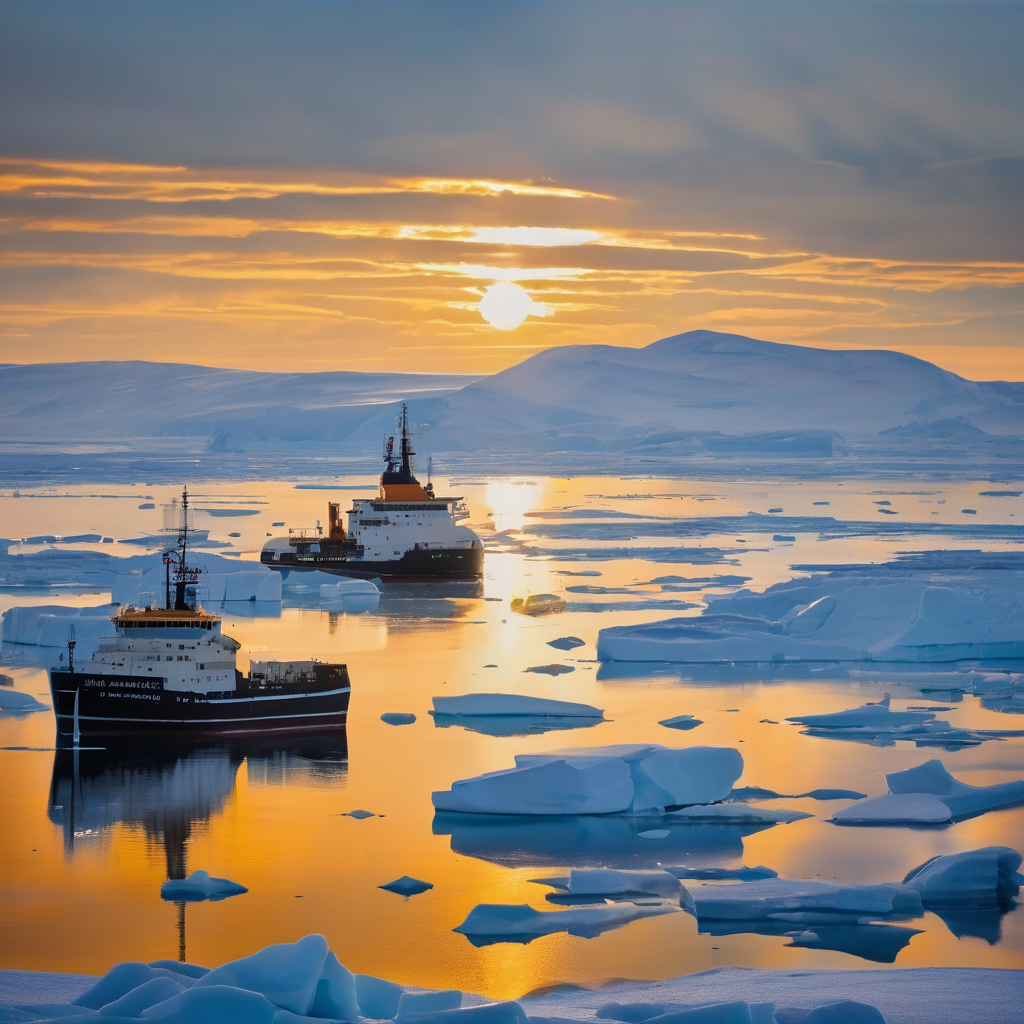Canada, the United States, and Finland are forging ahead with plans to build new icebreakers collaboratively, despite the recent cooling of trade relations between Ottawa and the Trump administration. In Washington on Tuesday, Canada’s Ambassador to the U.S., Kirsten Hillman, joined Secretary of Homeland Security Kristi Noem and Finland’s Minister of Economic Affairs Sakari Puisto in signing a joint statement of intent aimed at enhancing industrial cooperation and bolstering their respective icebreaker fleets.
Hillman emphasized the importance of strong alliances in today’s increasingly precarious global landscape, stating, “There is no doubt that we face an increasingly dangerous world and it is important in these times to build on the relationships with our key allies.”
This agreement appears to signal ongoing support from U.S. President Donald Trump for the Icebreaker Collaboration Effort, known as the ICE Pact, which was established under President Joe Biden. The future of this pact was uncertain following Trump’s election, which had strained Canada-U.S. relations. Earlier in January, Trump had dismissed Canada’s involvement in building necessary icebreakers, expressing skepticism about America partnering with Canada on such projects.
An October announcement from the Department of Homeland Security confirmed that the Trump administration had agreed to collaborate with Finland to acquire four Arctic Security Cutters for the U.S. Coast Guard, a vessel design by the Canadian firm Seaspan Shipyards. This partnership comes at a time when Trump had also abruptly halted trade talks with Ottawa due to disputes over tariffs.
Despite the challenges, Hillman has maintained open lines of communication with American officials regarding a myriad of issues. The importance of Arctic security and resource opportunities is a primary concern for Trump, according to Noem, who remarked that the Arctic remains “the world’s last most wild frontier” and that rival nations are racing to secure its strategic advantages.
To effectively operate in these frigid environments, Noem insists that America must bolster its icebreaker fleet, which entails strengthening supply chains and relocating manufacturing back to the U.S. She emphasized that the ICE Pact leverages the combined expertise and resources of the three nations to ensure timely and budget-conscious construction of icebreakers.
Among recent endeavors, Canada’s Chantier Davie shipyard has plans for a $1 billion investment in Texas facilities, along with its operations in Québec and Finland. Ottawa has articulated that the collaboration with the U.S. and Finland aims to expand their icebreaker capabilities to better tackle challenges presented by the Arctic.
Furthermore, Canada is enhancing its own Arctic readiness by constructing two new polar icebreakers for the Canadian Coast Guard. Hillman also highlighted the cooperative efforts between Canada and the U.S. in enhancing security along the North American perimeter, which includes increased border funding and significant defense investments.
The U.S. has leveraged economic tariffs aimed at Canada in a bid to address issues such as the flow of fentanyl from the northern border, though the volume seized there remains minor compared to that at the southern border. When questioned about Canada’s security measures, Noem acknowledged progress but did not directly address whether these efforts would lead to an end of tariffs imposed by Trump.
Overall, the trilateral collaboration on icebreakers signifies a commitment to addressing the strategic needs of the Arctic region while fostering stronger ties among these key allies, promising enhanced security and shared industrial efforts for the future.
